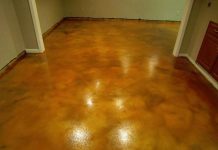Picture yourself going for a morning swim in your brand new pool. The sun shines down on you, and as you enjoy your new daily routine, you can’t wait until you can host the next pool party. Sure, it was expensive to install—but that it’s in, all that’s left to do is enjoy it.
Right?
Unfortunately, the above scenario is what can trip up many first-time pool owners. They’ve just finished building a pool or purchased a home—only to find out about tons of additional expenses they weren’t ready for.
From locating a reliable contractor to detect and patch up unexpected pool leaks to restocking on chlorine, we’ve narrowed down three expenses that most often catch new pool owners off guard.
So before you get ready for your backyard barbecue or pool party, consider the following to make sure your pool is safe and ready for business:
Recurring Chlorine Costs
Unfortunately, there’s no avoiding this one.
Setting up your pool means taking the time to ensure the chlorine is at the required levels at all times for safety and sanitary reasons. Even if you own a salt-water pool, devices within your pool’s setup electrify the salt and generate chlorine.
For pools that are set up to use chlorine tablets, you’ll need to either manually keep track of your pool’s chlorine level, or more likely, set up an automatic feeder. This is a device that will automatically add tablets when chlorine levels fall below standard.
For saltwater pools, you’ll need to add salt as needed and as recommended by the chlorine generator installed with your pool.
In either scenario, this breaks down to several hundred dollars a year, depending upon the size and type of pool you own. Chlorine is not something that can be skipped or lowered in price easily.
It may not be fun, but it has to be done.
Filter Replacement & Maintenance
Moving on from the near-monthly expenditures of chlorine levels, we have the issue of filter replacement and maintenance.
As you and your friends and family enjoy the pool, dirt, debris, and other particles will begin to migrate from the pools pump into the pool’s filter. Most of the time, this filter needs to be cleaned or outright replaced at least once a year.
While it could be attempted yourself, depending upon your experience as well as the way your pool is configured, it is more likely that you’ll be outsourcing this task.
The average cost of a maintenance job that involves filter replacement is a little over $200 as reported by many pool experts. This maintenance will not only set your pool up for success in the short-term but in the long-term as well.
Resurfacing
Our final expense you might not have considered might not be one that you experience in the near future. In fact, it may not come until long after you’ve gotten used to dealing with chlorine and periodic filtration cleaning.
Over time, the surface of your pool—that is, the surface of the internal basin where all the water is at—is going to degrade. This comes partially from the properties of chlorine, but also from normal wear and tear.
Eventually, you’ll need to resurface your pool. Resurfacing is often a multi-thousand dollar operation that involves draining your pool and keeping it de-commissioned as the local contractor strips away the old surface and makes way for the new one.
How often you need to resurface your pool will depend greatly on the surface you’ve chosen. The most common pool surface, vinyl liner, is going to require resurfacing the quickest at about 6-12 years. Concrete pools are less often overall, at about once a decade.
Your best bet for a pool liner that won’t need constant resurfacing is fiberglass. Not only do fiberglass pools last 25 years or longer—but they also tend to add more value to your home than other pool types.
So from monthly chlorine tablets to a once-in-generation deep clean, consider these three expenses before going for your pool.
That way, you can relax in confidence knowing exactly how and how often you’ll need to invest in your pool and give it the maintenance that it deserves.
Find a Home-Based Business to Start-Up >>> Hundreds of Business Listings.

















































